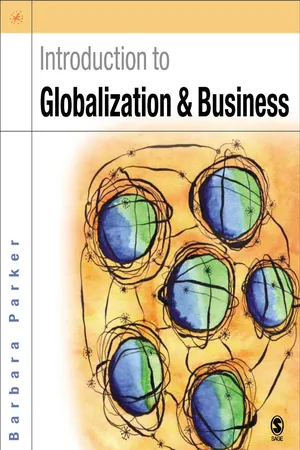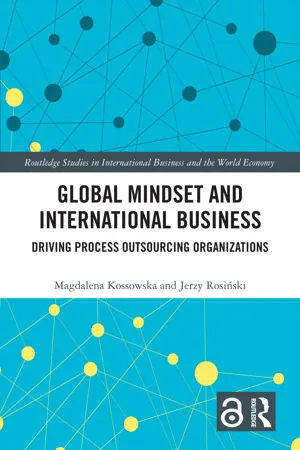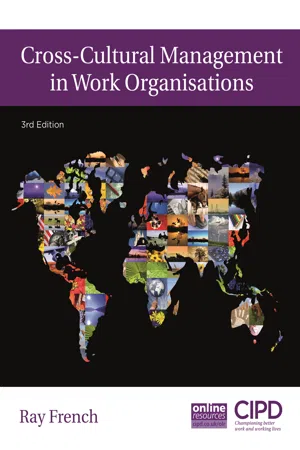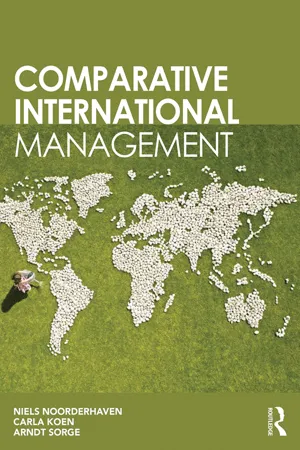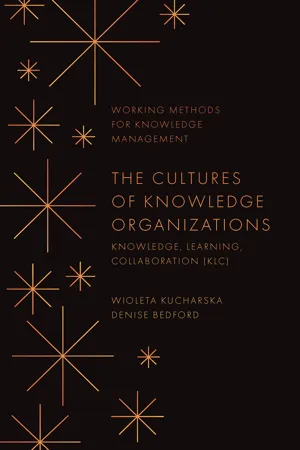Business
National Culture
National culture refers to the shared values, beliefs, and behaviors of a specific country or society. It encompasses customs, traditions, language, and social norms that influence the way people interact and conduct business within that nation. Understanding national culture is crucial for businesses operating internationally, as it can impact communication styles, negotiation approaches, and overall business practices.
Written by Perlego with AI-assistance
Related key terms
12 Key excerpts on "National Culture"
- eBook - ePub
Introduction to Globalization and Business
Relationships and Responsibilities
- Barbara Parker(Author)
- 2005(Publication Date)
- SAGE Publications Ltd(Publisher)
The border crossings of time and space, of nation-states and economies, and of organizations and industries focus increased attention on how culture facilitates global interconnections. For example, emerging information technologies expose us to cultural norms, values, and behaviors of many nations; telecommunications provide access to much of the world, and movies, music, and the Internet reflect behaviors that may differ from our own. Travel also exposes us to new experiences and different behaviors.At the same time, one observes similarities among nations such as worldwide enthusiasm for profit-generating activities or global brand popularity. These similarities and differences in culture affect and are affected by national cultural habits. How and in what ways these activities lead to a global culture is a subject this chapter explores.DEFINITIONS OF CULTURE
Growing international commerce in the 1970s and 1980s made it evident that National Cultures shape expectations. In the same time period, it also became evident that businesses have cultures. The book In Search of Excellence (Peters and Waterman, 1982) identified strong organizational culture as an important contributor to performance success. “Strong” organizational cultures were expected to help organizations develop and implement common goals, while “weak” organizational cultures were viewed as a drag on organizational purpose (Schein, 1992). Thus culture became an important concept for businesses.Culture has been analyzed at many different levels including group or subgroup, organization, industry, region, and nation. Hofstede (2001) provides a useful metaphor for distinguishing among levels of cultural analysis, suggesting that nations are cultural gardens, organizations are cultural bouquets gathered from the garden, and individuals are cultural flowers assembled for the bouquet. Culture is also defined in different ways: farmers culture the soil, biologists culture microbes, and in many societies “cultured” people attend the opera. Anthropologists alone have over 200 definitions for the word “culture.”Management scholars also define culture in different ways. For example, Geert Hofstede (1980) describes culture as collective mental programming that shapes individuals’ responses to their environment. Vern Terpstra and Kenneth David (1991) describe culture as a learned, shared, compelling, interrelated set of symbols whose meanings provide a set of orientations for members of a society. Edgar Schein (1992) describes culture as the pattern of basic assumptions that are invented, discovered or developed by a given group. These patterns emerge to help the group cope with problems of external adaptation and internal integration. A definition of culture broad enough to apply to the global, national, industry, and organizational cultures examined in this chapter is: culture is the learned, shared, interrelated set of symbols and patterned assumptions that help a group cope with the challenges it faces. - eBook - ePub
- Gillian Oliver(Author)
- 2011(Publication Date)
- Chandos Publishing(Publisher)
2National Culture
Abstract:
This chapter considers national cultural characteristics. The problems inherent in defining National Cultures are discussed, and the dangers of relying on stereotypes or caricatures are emphasised. The Hall contextual model is described, but most detail is reserved for the multidimensional model of National Culture developed by Geert Hofstede. Each of the Hofstede dimensions is described and the implications for information management are discussed.Key words National Culture power distance uncertainty avoidance individualism collectivismIntroduction
In this chapter I will explore the underlying level of our organisational culture model, National Culture, or the characteristics associated with ‘the collective programming of the mind acquired by growing up in a particular country’ (Hofstede, 1997 : 262). First I will consider the controversy surrounding National Culture as a construct, and then various interpretations or models will be described. The majority of this chapter is devoted to discussion of Hofstede’s dimensions, and consideration of possible implications for information management.The debate surrounding National Culture
Any exploration of National Culture has to be approached with caution. It is only too easy to fall into the trap of identifying stereotypes or caricatures. These national caricatures are simplistically drawn, therefore easily recognised and provide ready fodder for humour and populist politicians. Nationalities that are the target of jokes and more sinister attention vary according to geographical location and the presence or absence of societal forces, such as economic recession and immigration. So, it must be very strongly emphasised at the outset that the objective of our consideration of National Culture is not to construct neat little stereotypes that can be applied to forecast the behaviour of individuals. My goal is to provide insight into the diversity of values and attitudes of people working in organisations towards information, and to show that there are multiple perspectives at play. - eBook - ePub
Global Mindset and International Business
Driving Process Outsourcing Organizations
- Magdalena Kossowska, Jerzy Rosiński(Authors)
- 2023(Publication Date)
- Routledge(Publisher)
3Overview from the National Culture, organizational culture, and internationalization perspectiveDOI: 10.4324/9781003407263-043.1. National Culture – how it is approached
Across literature, multiple approaches as to how culture is described and categorized can be found. The most used models as well as those that are emerging are presented from sections 3.1.1 to 3.1.4 . As a summary point, all approaches will be run through in section 3.1.5 and compared.National Culture is presented by various approaches across the literature. Most common theories are outlined in this chapter to show how the work on the National Culture concept was developing over time and how the researchers present its definition and/or components.3.1.1. Hofstede’s model and GLOBE project
There is a growing interdependence between industrial organizations and nations, due to growing globalization. Hence, there is a need to expand our understanding within cross-cultural management practices and its influences (Shi & Wang, 2011 ).Cultural model developed by Hofstede is a main approach in quantitative research within international strategic management (Beugelsdijk et al., 2015 ). But first, what is culture? According to Hofstede (2011) , this is a collective phenomenon. He describes culture as a “collective programming of the mind that distinguishes the members of one group or category of people from others” (Hofstede, 2011 , p. 3). This term is most applied in nations, ethnic groups, or organizations but also to generations, genders, or social classes. Hence, the level on which we apply this concept defines what type of “culture” we are researching. For example, National Culture, gender, or societal research applies more to roots human is acquiring in one’s development stages, whereas organizational culture relates to job and occupational culture is within schooling systems (Hofstede, 2011 - eBook - ePub
- Juan-Carlos Molleda, Sarab Kochhar(Authors)
- 2019(Publication Date)
- Wiley-Blackwell(Publisher)
TNC s) and imagine the kinds of organizational culture that might exist in them. What might it be like inside a consumer product company or a technology company, with its diverse employees? Think about a technology company like Apple or Amazon, and then about a consumer product company like Unilever. How do you think the organizational cultures differ among these organizations?It is interesting to note that organizational culture is not just patterns of behavior, but also jointly held beliefs. Such beliefs represent what the organization is and why it is the way it is. Organizational culture is shaped by and overlaps with other cultures, especially the broader cultures of the societies in which the organization operates. National Culture is a major component of the broader “contextual imperative” that constrains organizational culture (Johns 2006 ). National Culture has a powerful influence and is the essence of organizational culture, and of consequent employee behavior. Other factors like leadership style, language, symbols, procedures and routines, hierarchical levels, functional teams, and how various business functions operate can also define an organizational culture (Cameron and Quinn 2006 ).TNCs face a unique challenge in establishing and maintaining a unified culture when operating in multiple host cultures. How should leaders strike the right balance between promoting a single organizational culture, while still allowing for the influence of local cultures? The opening case of Zara and the impact of National Culture and traditions on the organization is one of many examples of how organizational and National Cultures can overlap and interact.The local and global forces are unique in each region where a transnational organization operates. The organization has to blend in with the local social cultural influences and match them with the shared goals of the organization, while still functioning smoothly as a part of a single, global entity. Transnational organizations must decide how much to localize their organizational culture and related management practices to fit within the host country context and how much instead to strive to maintain consistency or standardization (Bartlett and Ghoshal 2002). - eBook - ePub
- Christopher Brewster, Elizabeth Houldsworth, Paul Sparrow, Guy Vernon(Authors)
- 2023(Publication Date)
- CIPD - Kogan Page(Publisher)
This kind of research was mainly carried out in the 1970s to 1990s. It was guided by a quest to identify universally applicable dimensions of National Culture, identified in large-scale quantitative studies, to help people ‘navigate’ in different countries while doing their work. (In this chapter, we outline the best-known of these models.) There followed a period of review, modification and critique of these frameworks. Studies of intercultural interactions : started in response to the competitive success of nationally different management models (such as the success of Japanese transplant factories in the USA and the growth of European and Asian multinational corporations). This kind of research was mainly carried out from the 2000s onwards. National Culture is still seen as a fundamental source of individual identification, but, within an organisational setting, culture is seen to emerge as a result of ‘hidden negotiations’ between interaction partners. More attention in this type of study is given to how people interact across cultures, the characteristics and processes through which new cultures are formed, and the skills and intelligences needed to operate across cultures. The multiple cultures perspective : based on more recent conceptions (broadly since around 2010) of individuals and organisations operating in a multicultural context. Organisations are viewed as home to and carriers of several cultures at levels that include function, organisation and business unit, profession and occupational group, ethnic group, project-based network, regional institution, geographical and economic region, ideology and religion. Developments in information technology enabled and accelerated the process of globalisation, and new communication media brought a wealth of real-time information from remote cultures, thereby changing patterns of problem-solving at work - eBook - ePub
- Raymond French(Author)
- 2015(Publication Date)
- CIPD - Kogan Page(Publisher)
The final part of the chapter contains a dissection of the generic use of the term ‘culture’ as it can be used to explain similarities and differences between people. In particular, we focus on organisational culture as a focal point for shared values and identities and the complex linkages between organisational, professional and national or regional cultures.2.2DEFINING CULTURE: VALUES, ATTITUDES AND BEHAVIOUR
One commonly held view on culture links it to the ideas, meanings and, in particular, the values held by its members. Hofstede (2001, p9) summarised this idea in his classic quote viewing culture as ‘the collective programming of the mind that distinguishes the members of one group or category of people from another’. In this view of culture, what is called collective programming takes place through socialisation – the processes by which a society (or group or organisation) transmits values from one generation to another. It should be noted clearly at the outset that Hofstede also recognised both individual programming, allowing for individual personality and abilities, and collective programming, comprising behaviour patterns common to all humans; for example, aggression. This last point is often ignored in summaries of Hofstede’s work, but is crucially important. The writer who is perceived as the most influential contributor to the literature on culture and business concluded that culture was only one source of difference between people. However, Hofstede concluded that culture was an important source of difference, and that the vast majority of people did learn cultural values through the agencies of socialisation, for example, a national education system.The view of culture that stresses the key role of learned values, largely shared by members of a group, underlies much of the research and resultant theories in the field of cross-cultural business and management. Lassere (2012), when examining the impact of culture on global strategic management, locates the key importance of cultural heritage which was underpinned by deeply embedded assumptions held by people on concepts such as power, role and hierarchy. This cultural heritage of norms and values arose from past historical experience. We will see in Chapter 3 - eBook - ePub
- Arndt Sorge, Niels Noorderhaven, Carla Koen(Authors)
- 2015(Publication Date)
- Routledge(Publisher)
No study has sampled many more than 50 to 70 of the nearly 200 current national entities. Europe, North America and the Pacific Rim are well represented, but African and Arab countries are badly under-represented in all studies. Moreover, the dimensions that emerge are affected by the values included in the survey questionnaires. It is clearly too early to foreclose on the possibility that further theorizing and consideration of values found in indigenous studies will yet point to additional major dimensions (Smith and Schwartz, 1997). 2.6 National Culture and organizational culture As this book focuses on differences between countries that are relevant for international business, the subject of organizational culture is of secondary importance here. Organizational culture distinguishes one organization from another, and the culture of an organization is likely to be influenced by the country context to a certain extent, as we will discuss later in this section. However, inasmuch as this is nothing more than the way in which characteristics of the National Culture manifest themselves in individual and group behaviour there is no reason to insert the intermediary level of organizational culture. We will discuss the impact of National Culture characteristics on perceptions and behaviours relevant to management and organization in the next section. Here we are concerned with a possible relation between National Culture and organizational culture. This issue is important because it has been the subject of a recent debate among cross-cultural researchers. The context of this debate was a fourth large-scale etic research project, not discussed above: the GLOBE project. 5 The GLOBE project attempted to measure both national and organizational culture with nearly identical sets of questions (see House, Hanges, Javidan, Dorfman and Gupta, 2004). These questions aimed to tap into values at the level of the country, and practices at the level of the organization - eBook - ePub
Chinese Firms Going Global
Can They Succeed?
- Joseph Healy(Author)
- 2018(Publication Date)
- WSPC(Publisher)
(Hill, 2011) Much of the literature on cross-cultural management places emphasis on the dominance of the national business system (NBS), where the dynamics of nationality has resulted in distinctive national paths to internationalisation. Whilst firm-specific culture is influenced by the dominant National Culture, firms can develop a stronger culture than that generally associated with the National Culture. For example, through its in-house management training college, GE built a distinctive culture that defines GE globally. The same is true of firms such as Goldman Sachs, McKinsey, IBM, JP Morgan, and McDonalds, to name just a few. In his best-selling book Built to Last (1994), Jim Collins wrote that one of the things that successful companies have in common is a ‘cult-like culture’ and traditions that are unique to the firm. Experienced Western international firms have learnt to adapt their cultures to local market conditions, often by hiring local senior management. International firms perform better when their foreign subsidiary’s culture is congruent with the National Culture of the country it is based in. National Australia Bank (NAB), for example, focused its cross-border M&A on the UK, US and New Zealand in the 1990s because of its comfort in dealing in Anglo-American markets. However, a ‘one-size-fits-all’ firm culture that suggests that a good manager in Australia will be a good manager in other countries is flawed. Of the Chinese firms, Huawei has led by example in trying to internationalise their culture, reflected in the fact that a growing number of their employees are based overseas and are non-Chinese. It is thus not a surprise that, amongst large Chinese firms, Huawei has been growing in developed economies - eBook - ePub
Corporate Assessment (Routledge Revivals)
Auditing a Company's Personality
- Adrian Furnham, Barrie Gunter(Authors)
- 2015(Publication Date)
- Routledge(Publisher)
3 Corporate culture INTRODUCTIONA number of research preoccupations and themes of organizational thought have come together to influence the development of the concept of corporate culture. For over a decade this original anthropological concept has been considered, debated and discussed by researchers, business gurus, newspaper and magazine writers, and line managers. Quite how or why this concept became so popular at this present time, and the need to measure corporate culture, have many different explanations.Attempts to explain the marked success of Pacific-rim countries and Japan in matching and exceeding American and European levels of productivity, quality, innovation and service have tended to point up the importance of values shared by Japanese management and workers as an important determinant of their success. These values, it has been argued, result in behavioural norms that demonstrate a commitment to quality, problem-solving and co-operative effort in greater degree than is generally the case in comparable organizations outside Japan.In more recent years, researchers in western countries who have investigated and set out to list the definable characteristics of economically successful companies both within Europe and North American countries have pointed to certain aspects of culture, such as the strength and pervasiveness of core values as an element and, it is claimed, a significant element in their success. Thus, it is assumed that the values and behavioural norms which are part of a company and which both define and drive it are a significant part of its economic success.Partly stimulated by this work and by increasing international competition to capture new markets and maintain old ones, the emphasis on quality (which can be defined as working to a standard above the norm) and customer service has highlighted the importance of people aspects in organizations. We will return in more detail to the subject of customers in Chapter 6 - eBook - ePub
The Cultures of Knowledge Organizations
Knowledge, Learning, Collaboration (KLC)
- Wioleta Kucharska, Denise Bedford(Authors)
- 2023(Publication Date)
- Emerald Publishing Limited(Publisher)
Kucharska and Rebelo (2022) , and primarily the empirical evidence provided in this book (Appendix B) are essential to building out the theoretical and foundational organizational cultures of the knowledge economy (KLC approach). This essential new research helps us understand how culture works, what factors shape it, and how the structural levels of organizational culture influence the entire company’s shared mindset. In essence, it provides practically what managers need to know to introduce and manage a company culture.Culture – Definitions and Characterizations
Culture has many definitions in scholarly and popular literature. However, the most common characterization of culture is a pattern of shared underlying assumptions that a group learned as it solved problems of external adaptation and internal integration, which has worked well enough to be considered valid and, therefore, to be taught to new members as the correct way to perceive, think, and feel about those problems (Schein, 1992 ).On a practical level, culture can be defined as the set of assumptions, beliefs, values, and behaviors a group has developed over time, enabling it to survive in any environment (Cooke & Rousseau, 1988 ). Assumptions, beliefs, values, and behavioral patterns form its identity. Culture is taught to the new members of a society as the correct way to think and feel about problems and challenges. It is the total of all the shared assumptions and beliefs a group has learned throughout its history. Culture is the structure and control system that generates behavioral standards.Culture is viewed as a shared mental model that influences how individuals interpret behaviors, and they often behave without being aware of the underlying assumptions. Culture is learned, reinforced, and handed on as learning to the next generation and new members of groups. Cultures are reinforcing – they can hold us hostage to traditional beliefs, prejudices, and perspectives. And cultures can be liberating – they can create new assumptions and help us to develop and instill new values and behaviors. Perceive success will reinforce the culture and make it stronger. An organization or group will develop its distinct patterns of behaviors and beliefs to support the culture and the internal socialization process. - eBook - ePub
The Mindful International Manager
How to Work Effectively Across Cultures
- Jeremy Comfort, Peter Franklin(Authors)
- 2014(Publication Date)
- Kogan Page(Publisher)
In more individualistic cultures, such as in the United States or the United Kingdom, it may be easier for you to behave in ways that are different from the ways your colleagues behave. However, it is important to distinguish once again between national or ethnic cultures, organizational cultures and other types of culture. The United States may be a highly individualistic society but there are many US companies that expect their employees to follow the company line and procedures very rigidly.How differences in individualism may express themselves in business and management In more individualist cultures In more group-orientated cultures … individuals are autonomous and independent of groups … individuals are interdependent group-members … individual goals are more important … group goals are more important … management is management of individuals … management is management of groups … individuals are rewarded … groups are rewarded … individual appraisal and feedback improve performance … individual appraisal and feedback are a threat to harmony … there is a belief in individual decisions … there is a belief in group decisions … communication tends to be low-context … communication style tends to be high-context (Adapted from Hofstede, 2001: 244–245; Gelfand et al , 2004: 45)In individualistic National Cultures, individuals are expected to look after themselves and their immediate family. In a working context, individualism means that the focus is on the management and performance of individuals – on rewarding and promoting the most successful member(s) of a team, for example.It’s not teamwork in the concept of the orchestra’s music being greater than the individual musicians. Here, there’s a lot of ownership, a lot of boundary drawing, defining your piece and taking care of it.Timothy Taylor (USA), Henkel, GermanyIn group-oriented cultures, members of the group and of the extended family are expected to look after each other. Networks play a fundamental role both at work and outside. At work, the focus is on the management and performance of the whole group or team - eBook - ePub
International Business
Attitudes and Alternatives
- Alan Sitkin(Author)
- 2021(Publication Date)
- Routledge(Publisher)
The problems that arise at these interfaces tend to be managed at two different levels: the corporate culture that a MNE develops, and through individual IB practitioners’ intrapersonal conduct. There is some overlap between these levels, but they are largely independent phenomena and should be studied as such.Corporate culture
An organic corporate culture can spread across a MNE’s different entities if it successfully reproduces the dominant nationality’s values and customs (usually the original head office’s home culture). There are notable examples of this happening: the BBC replicating throughout the world its neutral and dispassionate British approach to news-gathering (as opposed to other more opinionated media companies); Apple subsidiaries worldwide being staffed by individuals from different backgrounds but all possessing a similar sense for technological entrepreneurship; and Tata offices everywhere adhering to the company’s original value system, characterised by the combining of social values with business objectives.In other MNEs, however, there may be less of a desire to disseminate the original corporate culture and more of a willingness to allow new cultures to flourish as the company accumulates international experience. This dichotomy raises questions as to the mindsets of decision-makers facing the intercultural issues that inevitably arise when they employ an international workforce and/or interact with foreign suppliers, customers or even governments. The confidence or, conversely, anxiety that practitioners feel when broaching the topic of culture is actually an integral part of their own culture. As with so many other aspects of IB, how people deconstruct “the Other” says as much, if not more, about themselves as it does about the objects of their attention (Wood et al. 2010 ).Cultural mindsets
In 1969, the American ethnologist Howard Perlmutter published what would become a seminal construct in considerations of IB practitioners’ predisposition towards the way cultural differences might be handled. This came to be known as the EPG model, an acronym denoting “ethnocentrism”, “polycentrism” and “geocentrism”, and which would evolve ten years later into EPRG, with the new initial referring to “regiocentrism”. These categorisations are worth studying in greater detail, if only to honour the rare success that Perlmutter enjoyed in developing a concept capable of migrating beyond purely academic circles to become a terminology widely used by IB practitioners themselves (Perlmutter 1969
Index pages curate the most relevant extracts from our library of academic textbooks. They’ve been created using an in-house natural language model (NLM), each adding context and meaning to key research topics.
